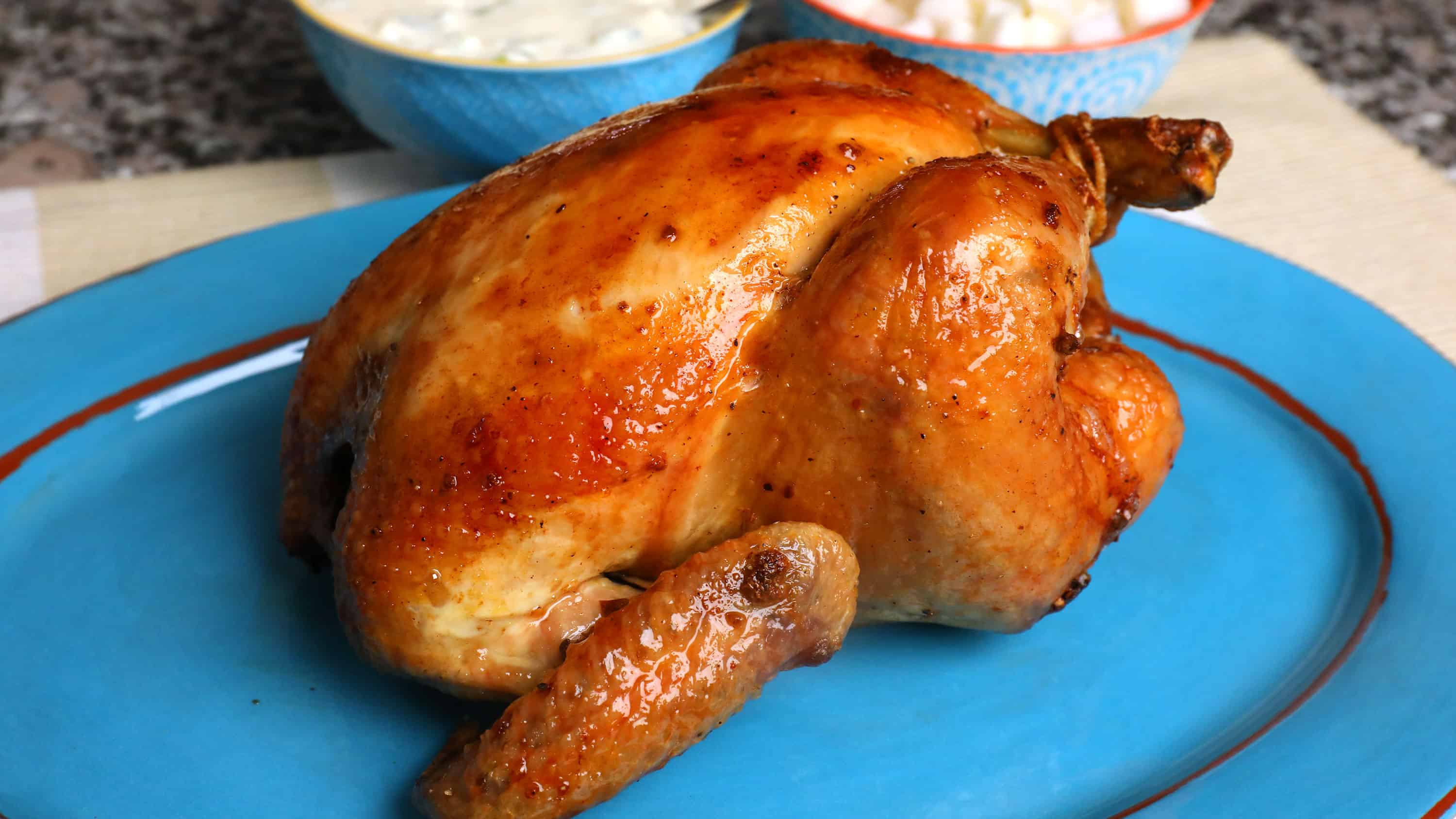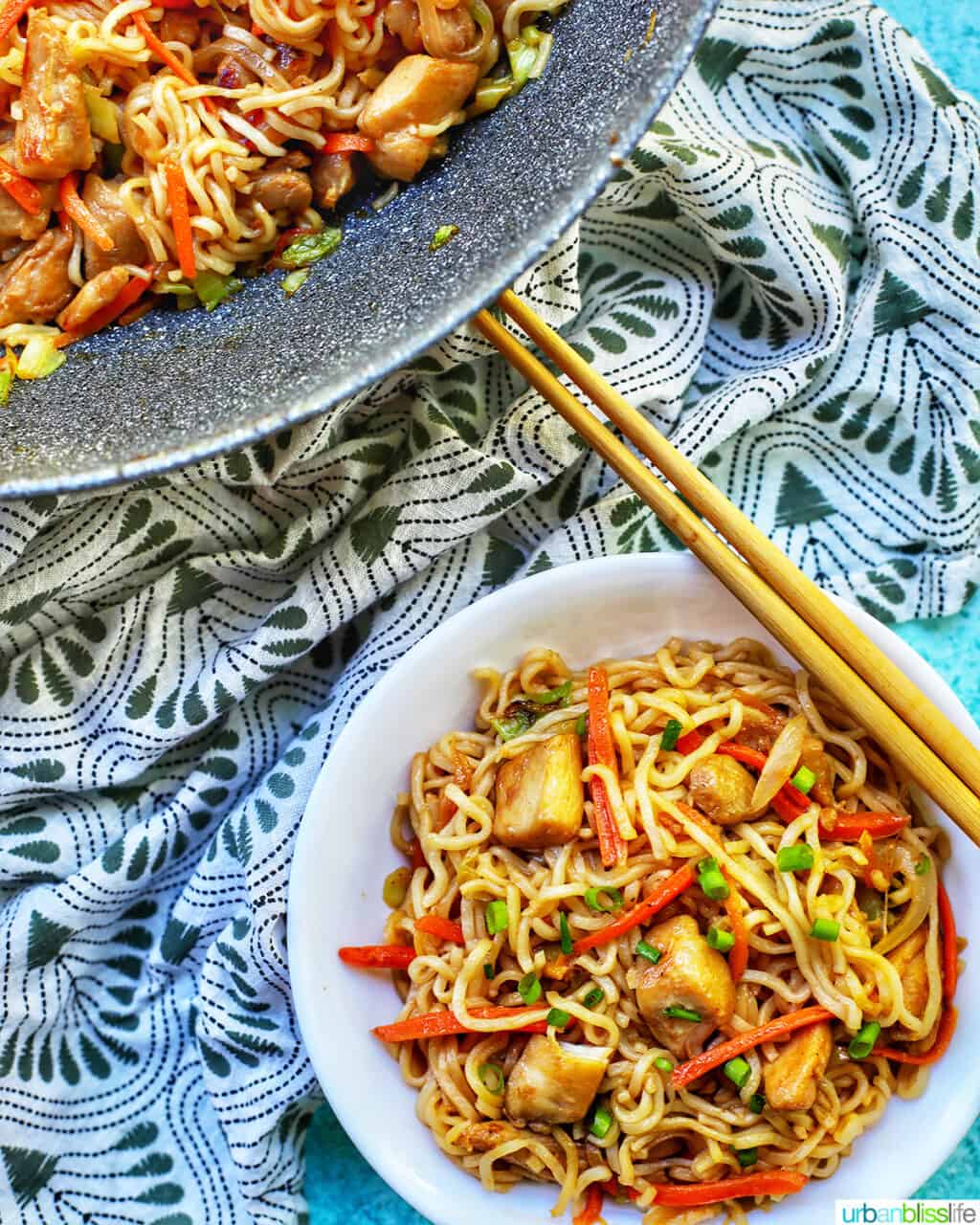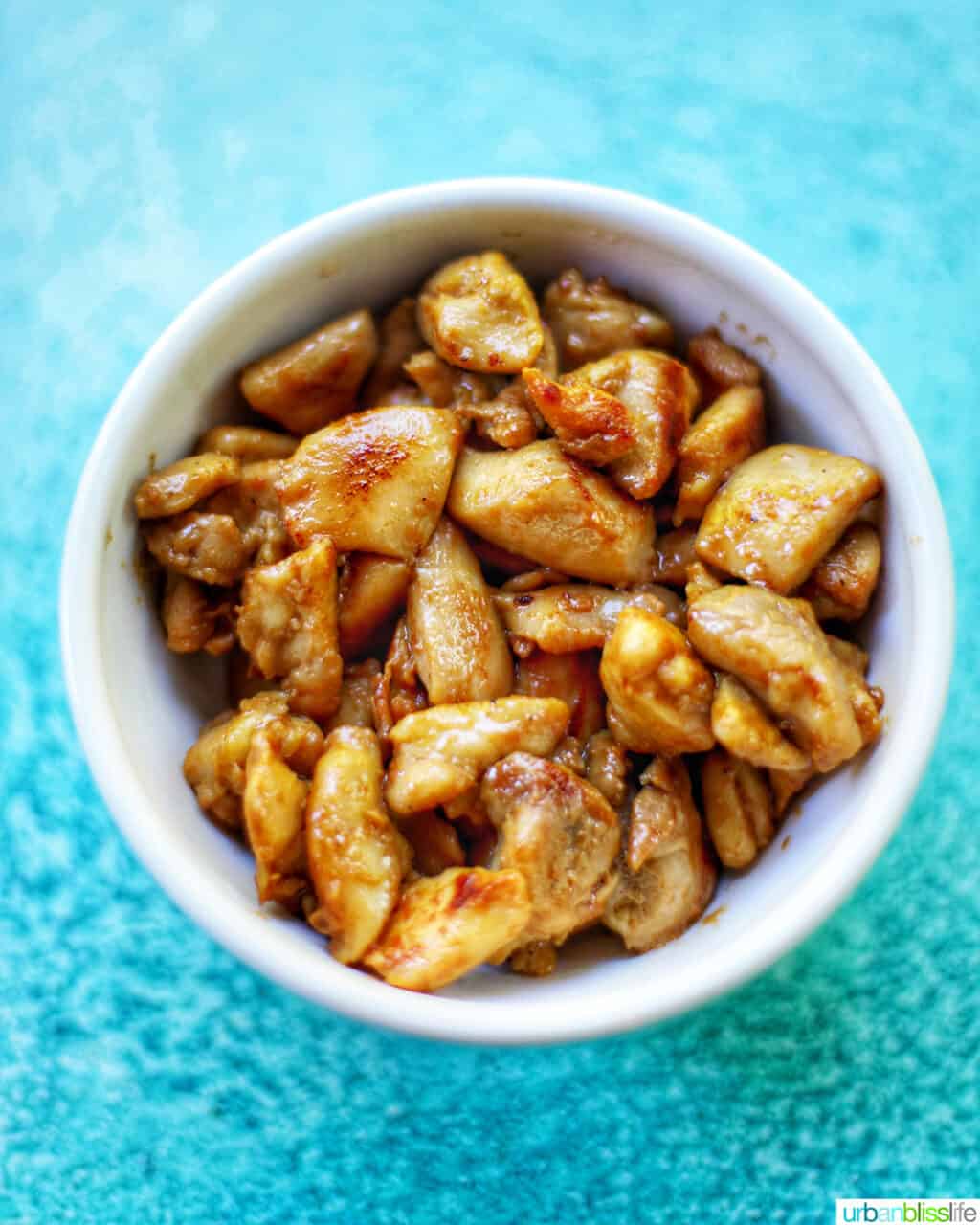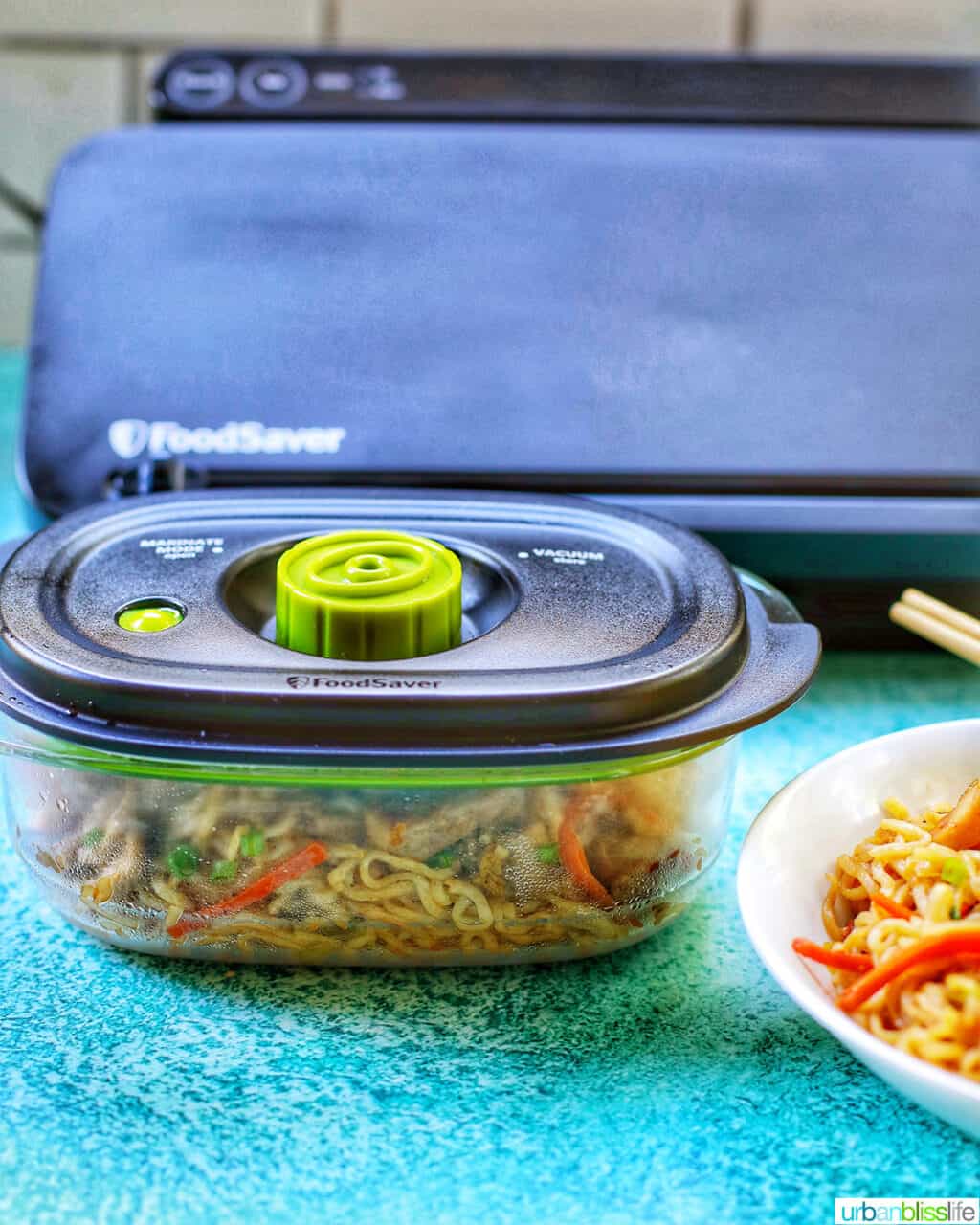Ever craved something savory, slurpy, and satisfying that comes together in less than 30 minutes? Chicken yakisoba might be just what you’re looking for! As someone who’s been obsessed with Asian noodle dishes for years, I’ve gotta tell you – this Japanese stir-fried noodle dish is a total game-changer for busy weeknights.
Chicken yakisoba combines tender chicken, crisp veggies, and chewy wheat noodles all tossed in a sweet-savory sauce that’ll make your taste buds do a happy dance. It’s comfort food that doesn’t leave you feeling heavy, and it’s way easier to make than you might think!
What Exactly Is Chicken Yakisoba?
Chicken yakisoba is a Japanese stir-fried noodle dish featuring wheat noodles, tender chicken pieces, and a colorful mix of vegetables, all coated in a sweet and savory sauce The word “yakisoba” actually comes from two Japanese words “yaki” (meaning fried) and “soba” (referring to buckwheat noodles)
Interestingly, despite the name suggesting buckwheat noodles, modern yakisoba typically uses wheat-based ramen noodles instead. This delicious dish originated as a convenient street food sold from food carts during festivals and markets in Japan. Today, it’s become a staple in Japanese cuisine and has gained popularity worldwide.
The Key Components of Chicken Yakisoba
The Noodles
The foundation of any good yakisoba is, of course, the noodles! While traditional soba noodles are made from buckwheat, most modern yakisoba recipes use wheat-based ramen noodles. These noodles are usually:
- Pre-steamed and oiled for easy cooking
- Thicker than typical ramen noodles
- Similar to Chinese chow mein noodles
- Quick-cooking (just 2-3 minutes in boiling water)
The Protein
Chicken is the star protein in this version of yakisoba Typically, you’ll want to use
- Boneless, skinless chicken breast or thighs
- Sliced into thin strips for quick, even cooking
- Sometimes marinated briefly in soy sauce or sake
The Vegetables
The vegetables in yakisoba add color, texture, and nutrition. The most common veggies include:
- Cabbage (almost always present)
- Onions
- Carrots
- Bell peppers
- Bean sprouts
- Mushrooms (especially shiitake)
- Green onions
- Broccoli
The Signature Sauce
This is where the magic happens! Yakisoba sauce is what gives the dish its distinctive flavor profile. It typically contains:
- Worcestershire sauce (preferably Japanese-style)
- Soy sauce
- Ketchup
- Brown sugar
- Oyster sauce (sometimes)
- Grated ginger
- Sriracha or other hot sauce (optional)
This combination creates a perfect balance of sweet tangy savory, and umami flavors that coat the noodles and other ingredients.
Optional Toppings
Traditional yakisoba is often garnished with:
- Aonori (dried seaweed flakes)
- Benishoga (pickled ginger)
- Katsuobushi (dried bonito flakes)
- Sesame seeds
- Japanese mayonnaise
The History of Yakisoba
Unlike some Japanese dishes that date back centuries, yakisoba is relatively modern. It rose to popularity after World War II during a time of food scarcity. It was developed as an affordable, filling meal using readily available ingredients.
While it might seem like yakisoba has Chinese origins (and it was indeed inspired by Chinese chow mein), the dish as we know it today is distinctly Japanese, adapted to local tastes and ingredients. It began as street food and has now become a beloved staple in homes and restaurants throughout Japan and beyond.
How to Make Chicken Yakisoba at Home
Making chicken yakisoba is easier than you might think! Here’s a step-by-step guide to creating this delicious dish in your own kitchen:
Ingredients You’ll Need:
- 2 packages (3 oz each) instant ramen noodles or 4-6 oz dried yakisoba noodles
- 1 boneless, skinless chicken breast (or 2-3 thighs), thinly sliced
- 1 onion, thinly sliced
- 1/2 head cabbage, thinly sliced
- 1 large carrot, grated or julienned
- 2 cups broccoli florets (optional)
- 2 Tbsp vegetable or canola oil
- 1/4 cup soy sauce
- 1/4 cup Worcestershire sauce
- 2 Tbsp ketchup
- 1 Tbsp brown sugar
- 1 Tbsp grated ginger
- Sesame seeds and green onions for garnish (optional)
Step-by-Step Instructions:
-
Prep your ingredients: Slice chicken into thin strips. Thinly slice onion and cabbage. Grate or julienne the carrot. Cut broccoli into bite-size pieces. Grate ginger.
-
Make the sauce: In a small bowl, combine soy sauce, Worcestershire sauce, ketchup, brown sugar, and grated ginger. Stir until sugar dissolves.
-
Cook the chicken: Heat 1 Tbsp oil in a large skillet or wok over medium-high heat. Add chicken strips and cook for about 5 minutes until no longer pink. Remove chicken to a plate.
-
Sauté the vegetables: Add remaining oil to the skillet. Add onion, cabbage, carrots, and broccoli. Stir-fry for about 5 minutes until veggies start to soften but still have some crunch.
-
Cook the noodles: While the veggies are cooking, boil noodles according to package directions (usually 2-3 minutes). Drain and rinse with cold water to stop the cooking process.
-
Combine everything: Return chicken to the skillet with the vegetables. Give the sauce a quick stir and pour it over everything. Cook for 1-2 minutes, stirring constantly.
-
Add the noodles: Add the cooked noodles to the skillet and toss everything together until the noodles are fully coated with sauce.
-
Serve: Divide yakisoba between plates or bowls. Garnish with sesame seeds and sliced green onions if desired.
Pro Tips for Perfect Yakisoba
After making this dish countless times, I’ve picked up some tricks that really make a difference:
-
Use very hot oil and cook ingredients in batches for best results when stir-frying. This prevents steaming.
-
Slice the chicken thin and against the grain so it cooks up tender and juicy.
-
Don’t overcook the vegetables – they should still have some crunch to provide textural contrast.
-
If ingredients start sticking to the pan when stir-frying, add a splash of water to help unstick them.
-
For extra flavor, add a dash of toasted sesame oil to the sauce or drizzle it over the finished dish.
-
Fresh ginger makes a huge difference – use a microplane to finely grate it.
Delicious Variations to Try
One of the best things about yakisoba is how versatile it is! Here are some tasty variations to experiment with:
Switch Up the Protein
- Thinly sliced beef ribeye
- Pork (traditional in Japan)
- Shrimp
- Tofu for a vegetarian option
Try Different Vegetables
- Mushrooms (shiitake, cremini, or button)
- Snap peas
- Bell peppers
- Shredded lettuce (added at the very end)
- Kimchi for a Korean-inspired twist
Experiment with Noodles
- Traditional soba noodles
- Udon noodles for a chewier texture
- Spaghetti in a pinch (not traditional but works!)
FAQ: Your Burning Yakisoba Questions Answered
Is chicken yakisoba spicy?
Not typically! The sauce is more sweet-savory than spicy. However, you can easily add sriracha, red pepper flakes, or chili oil if you prefer some heat.
Can I make vegetarian yakisoba?
Absolutely! Simply omit the chicken and use tofu or just extra vegetables. Just make sure to check that your Worcestershire sauce is vegetarian (some contain fish).
How long does yakisoba last in the fridge?
Yakisoba will keep for 3-4 days in an airtight container in the refrigerator. The noodles may absorb more sauce as it sits, so you might want to add a splash of soy sauce when reheating.
Can I freeze yakisoba?
I wouldn’t recommend freezing yakisoba as the noodles can become mushy when thawed. It’s best enjoyed fresh or within a few days of making it.
Is chicken yakisoba healthy?
It can be! Yakisoba contains protein from the chicken and nutrients from the vegetables. To make it healthier, use more vegetables, less oil, and reduce the sugar in the sauce. You could also try whole wheat noodles for added fiber.
What’s the difference between lo mein and yakisoba?
While both are stir-fried noodle dishes, lo mein is Chinese and typically uses a simpler soy-based sauce. Yakisoba is Japanese with a more complex sauce often containing Worcestershire sauce, which gives it a distinctive tangy-sweet flavor.
Where to Find the Best Chicken Yakisoba
If you’re not in the mood to cook, here are some places where you might find great chicken yakisoba:
- Japanese restaurants often have yakisoba on their menu
- Food festivals and street fairs, especially Asian food markets
- Food trucks specializing in Japanese cuisine
- Some Asian grocery stores have prepared food sections with yakisoba
- The freezer section of grocery stores often carries yakisoba kits
Why I Love Chicken Yakisoba
I gotta say, chicken yakisoba has become my go-to meal when I need something quick, tasty, and satisfying. What I love most is how it packs so much flavor into one dish while still feeling light and balanced. The combination of chewy noodles, tender chicken, and crisp veggies hits all the right notes.
Plus, it’s so adaptable! On days when my fridge is looking pretty empty, I can still usually scrape together enough odds and ends to make a decent yakisoba. It’s seriously saved dinner more times than I can count!
Whether you’re a seasoned cook or just starting out in the kitchen, chicken yakisoba is a dish worth adding to your repertoire. It’s quick, versatile, and sure to please even picky eaters. Give it a try, and I bet it’ll become a regular in your meal rotation too!

What to Serve with Chicken Yakisoba

Some of our favorite dishes to serve with chicken yakisoba recipe include:

Yes! You can use real yakisoba noodles, instant yakisoba noodles, or even spaghetti.
Absolutely. This chicken yakisoba recipe is just as delicious with broccoli, red cabbage, and mushrooms. If using larger vegetables, like broccoli, be sure to sauté those along with the carrots first. Then add the other, thinner vegetables that cook faster.
Yakisoba sauce is a richer, more complex blend of flavors, whereas soy sauce is simply soy sauce. The combination of ketchup, Worcestershire sauce, and oyster sauce give this yakisoba sauce a nice depth of flavor which makes this dish absolutely delicious!
You can freeze cooked chicken yakisoba in a freezer-safe container – like FoodSaver’s Preserve & Marinate Containers – or bag for up to one month. However, this dish is best eaten fresh, within five days. Freezing tends to diminish the flavors of the dish. If you do freeze yakisoba, allow it to that in the refrigerator overnight. You’ll also want to add some yakisoba sauce, or even plain soy sauce or teriyaki sauce, to the dish when reheating in the microwave or stovetop.
How to Make Chicken Yakisoba Noodles
First, make the sauce. In a large bowl, whisk together all of the sauce ingredients. Then pour half into a second bowl and set that bowl aside. You’ll use it at the end!
Next, cook the noodles according to package directions. While the noodles are cooking, start cooking the chicken.
Heat oil in a wok. Once the wok is hot, add the chopped chicken pieces, and pour in the sauce from one of the bowls. Stir constantly and coat all of the chicken pieces with the sauce. Cook until the chicken is cooked all the way through, about 4 to 7 minutes.
Remove the chicken from the wok and transfer to a bowl. Set it aside for later.
You should still have some cooking oil left in the wok. If not, add one tablespoon of oil. Add the carrots and onions to the wok and stir constantly, cooking until softened, about 2 minutes. Then add the cabbage and cook for one more minute, until softened.
Add the chicken back to the wok. Drain the cooked noodles and add them to the wok. Then pour in the remaining bowl of Yakisoba sauce. Stir all of the ingredients together until everything is well coated.

This is a very forgiving and adaptable chicken yakisoba recipe. It’s already a fast dish, but if you want to save even more time, try one of these kitchen shortcuts.
- Use pre-cooked chicken.
- If you don’t have time to chop veggies, you can use a coleslaw mix (without any dressing) of red and green cabbage and carrots.
- Use instant noodles instead of regular yakisoba noodles.

Since this chicken yakisoba recipe makes a large amount, I like to serve some as a main course one night. Then, I save the rest and we serve it as a side dish on another night.
To help the yakisoba stay fresh longer, I use my FoodSaver VS3110 Food Preservation System along with my Preserve and Marinate Containers. I love these containers so much! They not only vacuum seal to lock in freshness, but they’re also crack- and shatter-resistant AND they’re stain- and odor-resistant too! That’s a big plus, considering so many delicious dishes we cook are fragrant and have strong sauces that tend to stain regular old containers.
